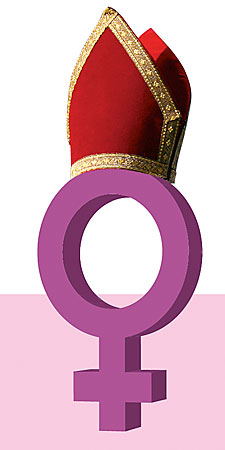JEREMY HALCROW: What is the most significant aspect of this issue ignored by the secular media?
GLENN DAVIES: The secular media tends to under-report the widespread opposition to this move across Australia. When the issue was set to be debated at Perth in 2004, a petition of 1300 women from 150 parishes was presented to General Synod expressing their view that the Bible's teaching only allows for gifted males to exercise prime leadership within the church. The majority " about 60 per cent " of these parishes were not in Sydney.
 What gives a legal body (the Appellate Tribunal) the authority to decide such an important theological issue as women bishops?
What gives a legal body (the Appellate Tribunal) the authority to decide such an important theological issue as women bishops?
As the highest court of appeal in the Anglican Church of Australia, they play an important role in matters concerning law in our church. They did not address whether women bishops are compatible with the Bible's teaching, but whether they were permissible under current Church law.
What law was in dispute?
Some parts of the Constitution of the Anglican Church of Australia were not clear, so there have been attempts to clarify the text. It was for this reason that a new definition was passed in the 1990s to specify more clearly the requirements " the "canonical fitness' " needed to become a bishop. This new definition deleted any reference to inherited English canon law, which had excluded women from becoming bishops, and replaced it with the requirement that the person need only be baptised and a priest of at least 30 years of age. This paved the way for women to be lawfully consecrated as bishops.
Former Archbishop of Sydney, Donald Robinson would not assent to this definitional change because he believed it would have exactly the effect that has come to pass. So given that there were clearly two legal opinions about the impact of the new definition, why did Sydney Synod "take the risk' and agree to the definitional change in the mid-1990s?
Good question! I was not on Synod at this time. However, the report to Synod from Standing Committee in 1994 says that it did not believe that Bishop Robinson's view would be upheld. As a result, Standing Committee recommended that Synod pass the ordinance, which they did. In my view they did so knowing there was a risk, which they unfortunately miscalculated.
At General Synod in October, you seconded a motion from the Archbishop of Melbourne, Philip Freier, "welcoming the clarity' given by the Appellate Tribunal. What did this mean?
Previously there was doubt as to the legality of women bishops under the Consitution. Now we know the opinion of the Tribunal on the question: it has indicated that women bishops are permissible. It was clarity that the General Synod welcomed, not the decision itself.
Of course, a future Appellate Tribunal could conceivably provide a contrary opinion on the same question, as it did last century on the matter of the remarriage of divorced persons. However, it would be foolish to live in the hope of such an entirely unpredictable scenario. The reality is that we currently have the opinion of the Appellate Tribunal on the disputed question, and unless the matter is taken to the secular courts, the decision still stands.
In what sense does the Appellate Tribunal's seemingly narrow 4:3 decision give the church "clarity'?
In 2001 when the Appellate Tribunal by a similar 4:3 majority gave its opinion that Lay and Diaconal Administration was consistent with the Constitution, the then Primate, Archbishop Rayner acknowledged the reality of the Tribunal's decision, even though he did not personally agree with its opinion.
Similarly, a question has been referred to the Appellate Tribunal and we now have clarity as to their views.
So what is the significance of this General Synod motion?
The General Synod resolution encouraged us to move on to the next phase of our common life. Women bishops in our national Church are now inevitable. We may not like it; we may not like the process that paved the way for it; we may disagree with the decision on either theological or legal grounds or both; but the reality is that women bishops will be in Australia this decade. We therefore need to think seriously about how women bishops will affect the Diocese in which they are consecrated and the Anglican Church of Australia as a whole.























